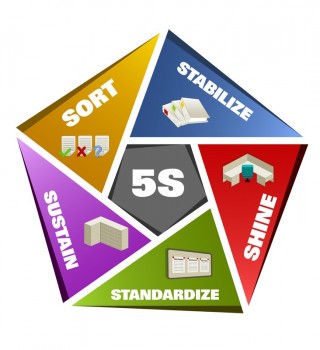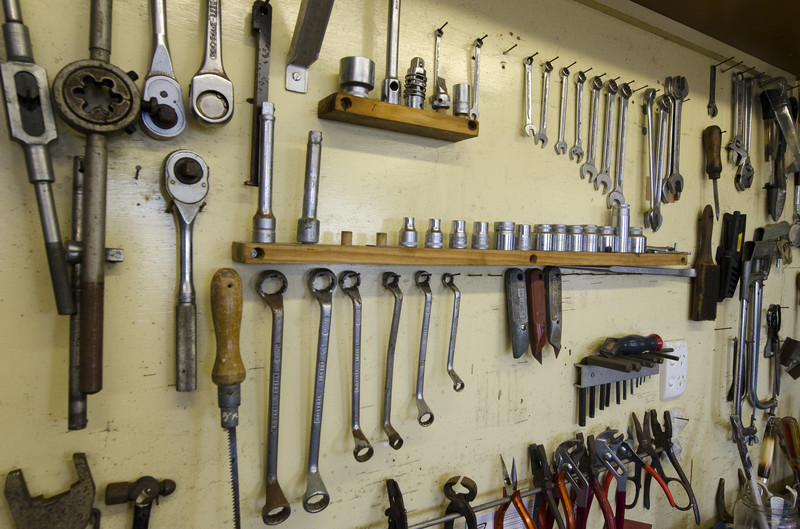Have you ever watched a home makeover show where a miracle worker comes into a cluttered and disorganized home and magically transforms the living space into an organized efficient home? Well in the automotive industry there is a similar process that is used to transform an inefficient process into a streamlined one that reduces waste in both materials and manpower. The process used to create organization out of chaos in the automotive industry is called the 5S methodology and is a philosophy that evolved in Japan and aligns with lean/Six Sigma manufacturing processes.
Where did the 5S process originate?
The 5S process evolved in the Japanese manufacturing industry. The 5S process was the precursor to the “just in time” manufacturing process which involves not ordering supplies, building products or shiping until just before an order is due. The 5S process eliminated waste and lost time from the Japanese manufacturing processes allowing this to be possible and making manufacturing more efficient. The 5S process has become popular and is used in a variety of places including office space, homes and other non-production areas.
The 5 steps in the methodology
There are five steps that are included in the 5S methodology including: sort, straighten, shine , standardize and sustain. The 5S name comes from the first letter of each step which also applies to the Japanese words as well. The 5S methodology can be applied to an individual or group and involves applying each of these steps to the process being assessed.
, standardize and sustain. The 5S name comes from the first letter of each step which also applies to the Japanese words as well. The 5S methodology can be applied to an individual or group and involves applying each of these steps to the process being assessed.
Seiri –整理– sort
The first step in 5S is sort which involves going through all the processes, tools and materials that have been collected in the area and discarding anything that is not essential and storing things that could be useful in the future but not essential to the job at hand. The adage “if in doubt throw it out” certainly applies in this situation. There are many benefits to this initial cleaning of the work space such as reducing clutter, creating space, less work hazards, no unnecessary tools so you can find needed tools quickly, and finally implements criteria for what is brought into the space in the future.
Seiton –整頓 – stabilize
The second step is to put things in order or to stabilize the process. This step makes you ask what tools do you need for this job and how do you position them so that they are available when you need to use them. When you create a place for the tools and materials that you need regularly you will reduce time trying to find the necessary tool and become more efficient. Also, when you can find the correct tool for the job you reduce the chances of producing poor quality parts and reduce defects.
Seison –清掃 – shine
Once you have removed all unnecessary clutter and created a place for everything to be stored it is time for the third step of the process, shine. The shine step is not just about cleaning the work space which is possible now that clutter is gone, but it is also the process for establishing a regular schedule for future cleaning and keeping things in order. Dust and debris particles are more than just clutter. When dealing with critical components it is imperative that the work area remains free of anything that could lead to poor quality on the parts. Rust and contamination are huge problems that can cause a lot of scrap throughout a process.
Seiketsu –清潔 – standardize
The fourth step of the process is standardize which involves creating habits that will maintain the order and cleanliness that was established by the first three steps. Standardize involves creating schedules and procedures for hourly work done in the area. This will become the day to day way that the area will be maintained. Usually work tools are labeled and people are assigned to do periodic audits in the area to ensure 5S is being followed.
Shitsuke –躾– sustain
The last step in the 5S process is sustain and this can be one of the most difficult steps of the entire procedure. In the fourth step we developed the procedures but in the sustain portion we must implement and maintain the procedures to keep the area in order. Developing new habits and discarding old patterns is one of the most difficult things to modify in human behavior which is why this step can be one of the most difficult to implement but with practice and discipline it can be managed.
The 5S process has benefits in the automotive industry and is used quite frequently by engineers as part of a continuous improvement process to keep manufacturing efficient. By constantly looking for areas to improve and processes to streamline we can keep costs down and eliminate unnecessary and inefficient activities. The 5S process is not universally loved however, and is sometimes viewed as a waste of time. However, if the process is used correctly and does not go overboard, it can really help to speed up workflow.

